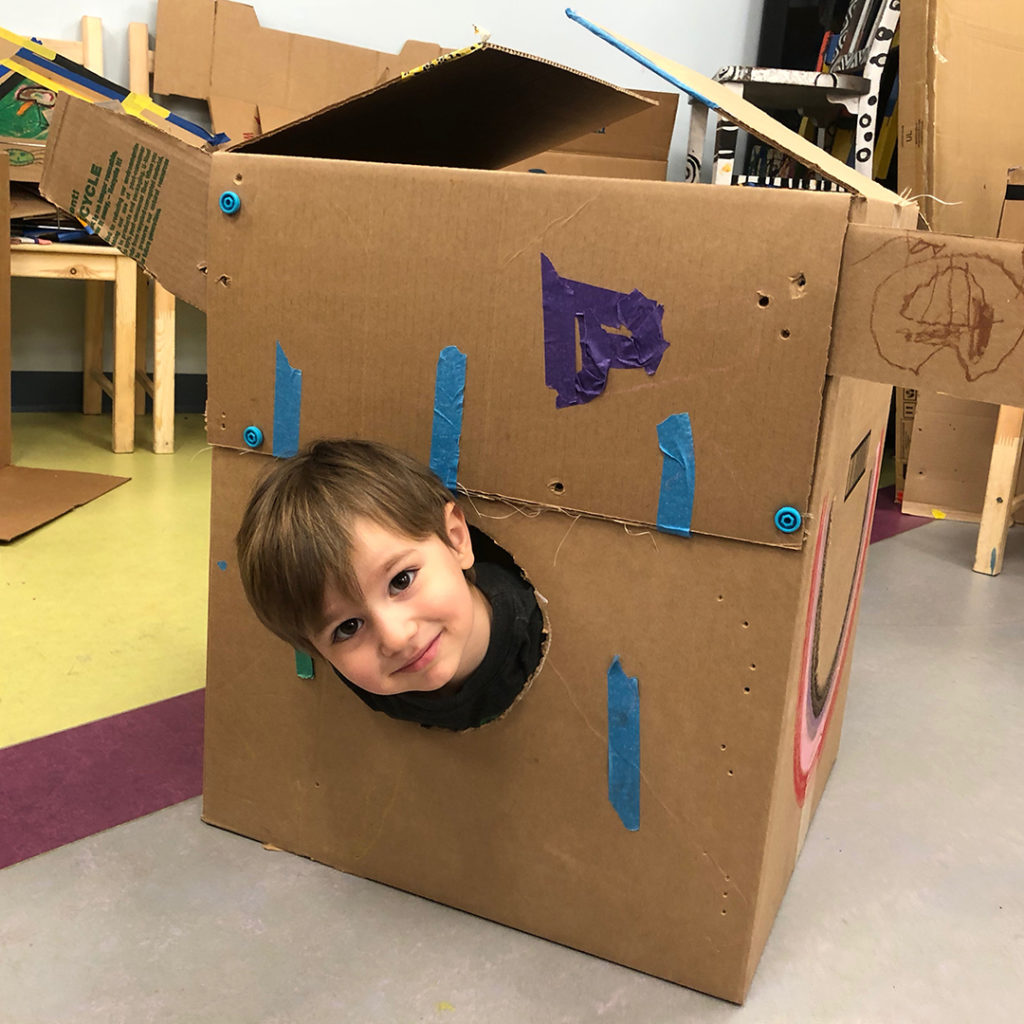Back to School Bonanza | Saturday, August 10, 9–2

Back to School Bonanza | Saturday, August 10, 9–2

This past weekend, as I filled up my recycling bins, I started to think about the fascination children have with boxes and often, more so the box itself than what came inside of it.

Why?
Box play is open-ended play in the purest form. As you may know, open-ended play is at the heart of what we do and believe in here at DCM. All of our exhibits are thoughtfully designed so that there is no one right way to interact with the exhibit and so that visitors can play with the same exhibit repeatedly, extending and deepening their understanding every time.
Box play makes me think about playing with loose parts. The theory of “loose parts” was first developed by Nicholson who believed that it is the “loose parts” in our environment that will empower our creativity. Loose parts, much like cardboard boxes, allow children to use materials in any way they choose, which in turn provides a wider range of play opportunities. Loose parts can be natural or synthetic. Balls, sticks, cups, stones, and essentially anything that does not have a specific set of instructions can be used alone or combined with other materials for creative play.
When children play with loose parts or open-ended materials they are using more imagination and creativity as well as developing more complex thinking and problem solving skills. Playing with things such as cardboard make it possible for children to develop their own ideas and explore their world at their own pace and on many different levels.
What do children get out of playing with boxes?

There is much to be gained both developmentally and educationally when playing with boxes. For starters, box play develops spatial awareness – what is the first thing most little ones do when encountering a box? They try and get inside of it. According to Gil Connell, blogger, teacher, and child development expert, the reason why children spend so much time crawling in, through, around, over, and under things is because they are developing spatial awareness and seeking to answer the question “how big am I?”
As young children learn through their senses their natural instinct is to seek an answer to this question by physically experiencing how big they feel in relation to something else. Larger boxes that can act as a cave or hideout can provide children with comfort. Much like curling up in an adult’s lap, or a nice warm hug. Small spaces can be comforting and provide children with a sense of security. Along these same lines, being in small spaces makes children feel big, and when you live in a world that is made for big people, being the giant must feel pretty empowering.
Let your imagination run wild and create new learning opportunities using box play and loose parts.

